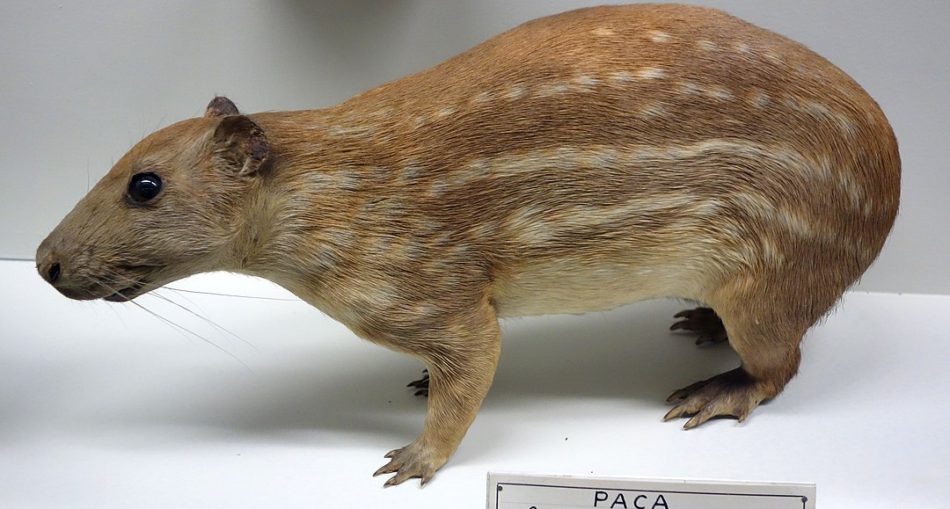Many in Guyana are familiar with the large rodent called Labba. They are especially seen in the rainforest scavenging in the night, roaming about and looking for food. Sometimes the Labba can be confused with its related species the agouti. Although they are both rodents, the agouti is from the Dasyproctidae family while the Labba is from the Cuniculidae family. Labba is famous for its tasty bush meat; it makes a delicious dish for many Guyanese.
Labba is also known as the lowland paca or spotted paca. It is called various names in different countries, for example, in Trinidad it is called lappe, in Brazil it is called gibnut, conejo pintado in Panama, guanta in Ecuador, lapa in Venezuela and majás or picuro in Peru.
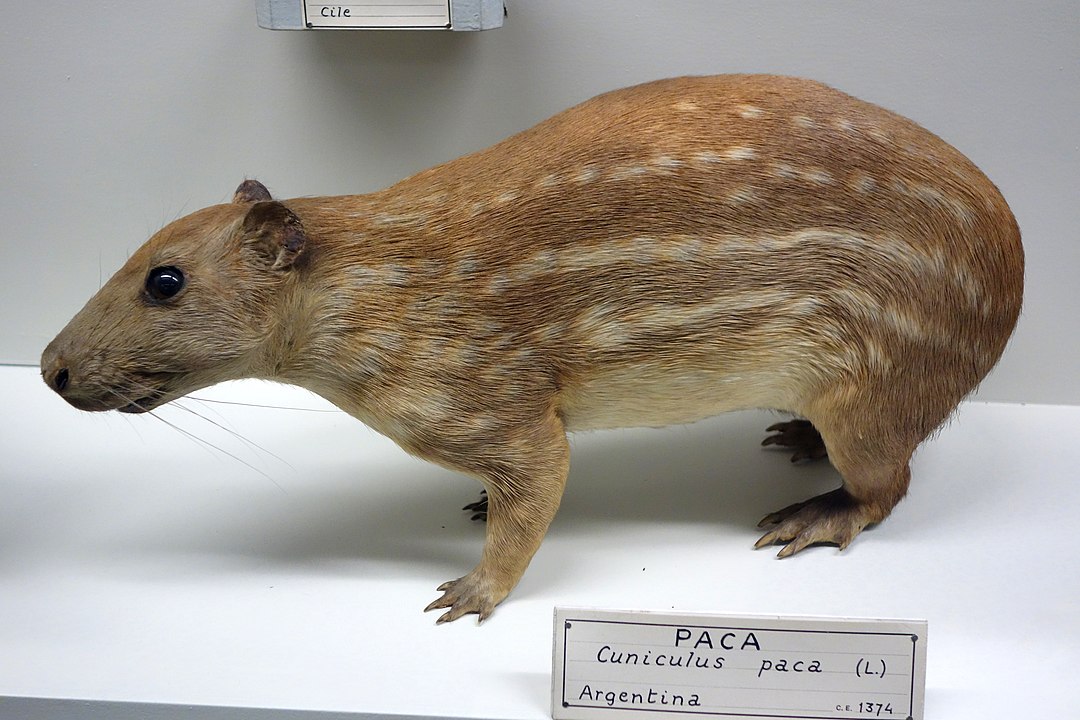
Labba – Photo by By Daderot – Own work, CC0, https://commons.wikimedia.org/w/index.php?curid=33395425
Features Of The Labba
Weight: An adult Labba can weigh between 13 and 26 lbs.
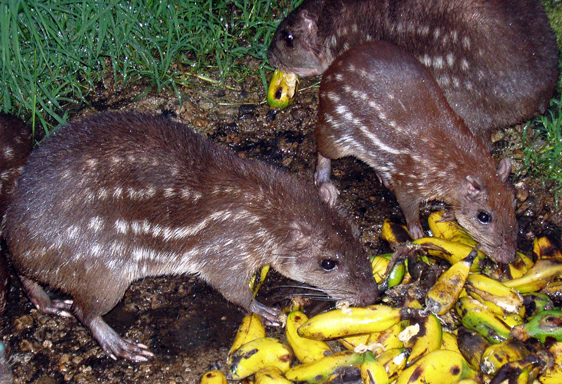
Labba Feeding | Marco Hernndez Photo, Source: HumedoTepezc_02.jpg (562 × 384 pixels, file size: 349 KB, MIME type: image/jpeg)
Appearance: They have coarse fur with no underfur, the upper body is dark brown to black and the underbelly is white or yellowish. It usually has three to five rows of white spots along its sides, against a dark grey background.
Tail: The tails of this animal is short and hairless.
Legs: Their legs are typically strong and thick. While Labbas have four digits in their forefeet, they have five in the hind feet (the first and fifth being smaller). Their nails are used like hooves.
Cheekbone: This is expanded laterally and dorsally and is used as a resonating chamber which is a unique feature among mammals.
Scientific Classification Of The Labba
Labba – Cuniculus paca [Scientific name]
- Kingdom: Animalia
- Phylum: Chordata
- Class: Mammalia
- Order: Rodentia
- Family: Cuniculidae
- Genus: Cuniculus
- Species: C. paca
Reproduction Of The Labba
They have low fertility rates but this doesn’t affect their survival. Each litter has one young labba, sometimes two. They usually have one to three young a year with a gestation period of about one hundred and fifteen to one hundred and twenty (115–120) days. Labbas sexually mature after about one (1) year. Their average lifespan is thirteen (13) years.
Did You Know?
- Labbas can carry leishmaniasis and trypanosomiasis. Both are diseases that can affect your health so be careful around them.
Habitat Of The Labba
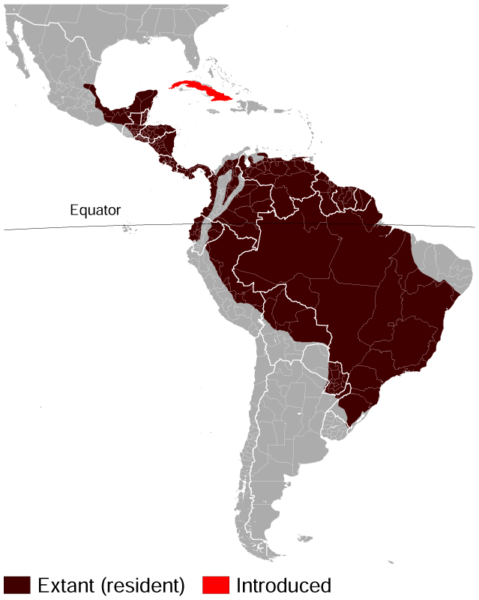
Countries where the Cuniculus paca can be found – By The author of the workand the IUCN Red List spatial data, CC BY-SA 4.0, https://commons.wikimedia.org/w/index.php?curid=41467006
Labbas live in forested habitats near to water source, like small rivers. They make homes by digging simple burrows about 6 ft. 7 inches below the surface, with multiple exits. It can also sometimes live in burrows created by other animals.
Tip: Labbas are good swimmers and they usually head to the water to escape danger. This is an advantage to them because they can stay underwater for several minutes.
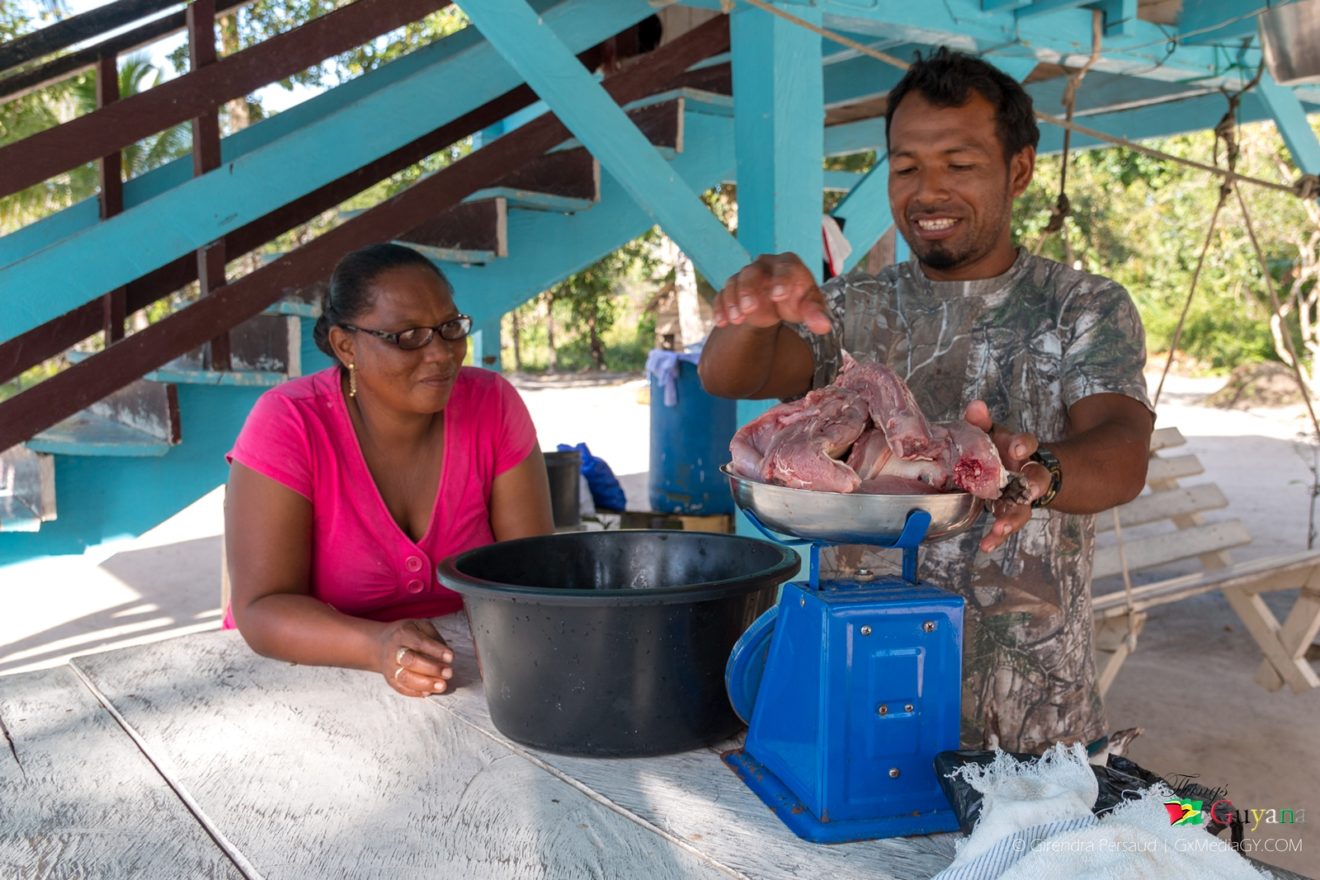
Labba Meat
Diet Of The Labba
Labbas are very good climbers and so they search for fruits in the trees. They are herbivores, they enjoying eating leaves, stems, roots, seeds, nuts and fruit, especially avocados, mangos and zapotes. They can be considered an important seed distributor since they tend to store food and forget where they are buried. This behaviour contributes to the regeneration of diverse forest growth.
Cooked Labba In Guyana
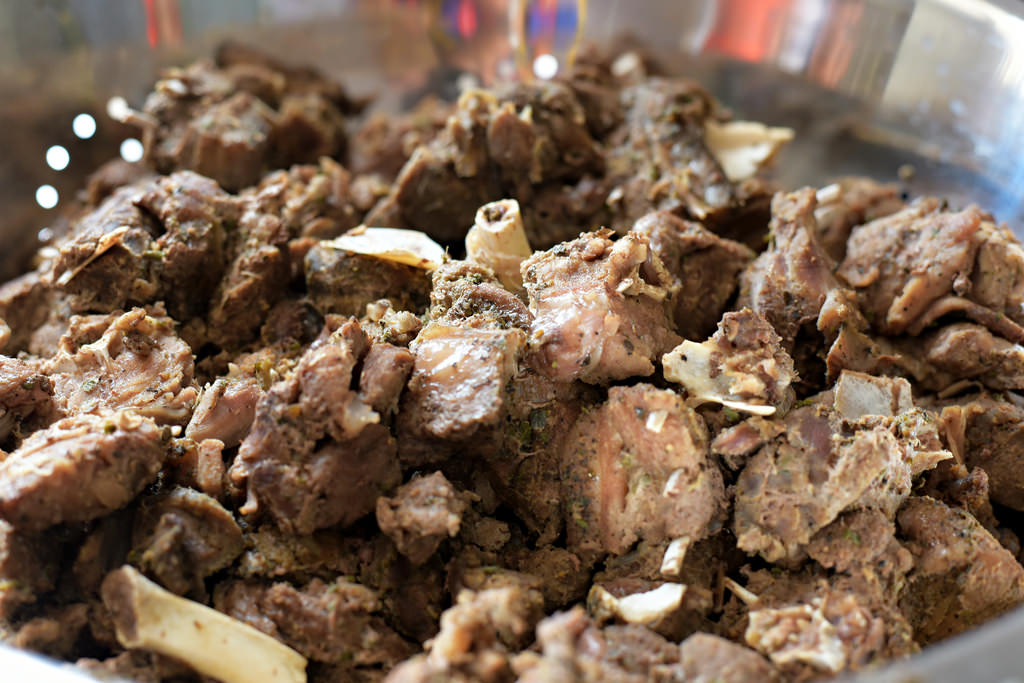
Labba Meat (Amanda Richards Photo) Source: https://hiveminer.com/Tags/guyana%2Clabba
Labba is roasted, stewed or curried and served alongside a variety of side dishes like rice or ground provisions.
Curry Labba – Guyanese Style
Ingredients:
- 1 lbs Labba meat, cut
- 1 tbsp curry powder
- 1/2 tbsp masala
- 1/2 tbsp geera
- onions, chopped
- coconut milk
- 2 sprigs celery
- 3 leaves thyme
- salt to taste
- diced potatoes
Curry Paste
Method:
- Put a skillet on stove and add heat oil.
- Add curry powder, masala and geera in a small bowl and mix.
- When oil is hot, add curry pasted and fry for about a minute.
- Add the Labba meat and stir. Ensure each piece is coated with the curry paste.
- Add diced potatoes.
- Next, add coconut milk.
- Allow to boil and reduce for about 15 minutes, stirring occasionally.
- Remove from heat.
- Serve warm with rice.
Quick Tip: If you are cooking the meat in a pressure pot, allow the meat to stew in its own juices after adding the curry paste mixture. Add water and cook for eight (8) minutes.
Labba In Guyana
Labba can also look like a tiny capybara in profile but it has its own unique features and abilities. For some they can appear to be quite adorable while others are scared of the fact that they are large rodents. Whatever the case, these fascinating rodents enjoy eating their fruits and nuts, they love to swim and they take pleasure in climbing to find their food. Some people take delight in eating these rodents, they find the meat very delicious. They serve it roasted, curried or stewed at parties and other gatherings. Some even eat it at home with some dhal and rice.
Article References:
- https://en.wikipedia.org/wiki/Lowland_paca
- https://guyanachronicle.com/2015/12/13/alis-guide-to-fine-dining-2/
Last Updated: 2020-07-13

